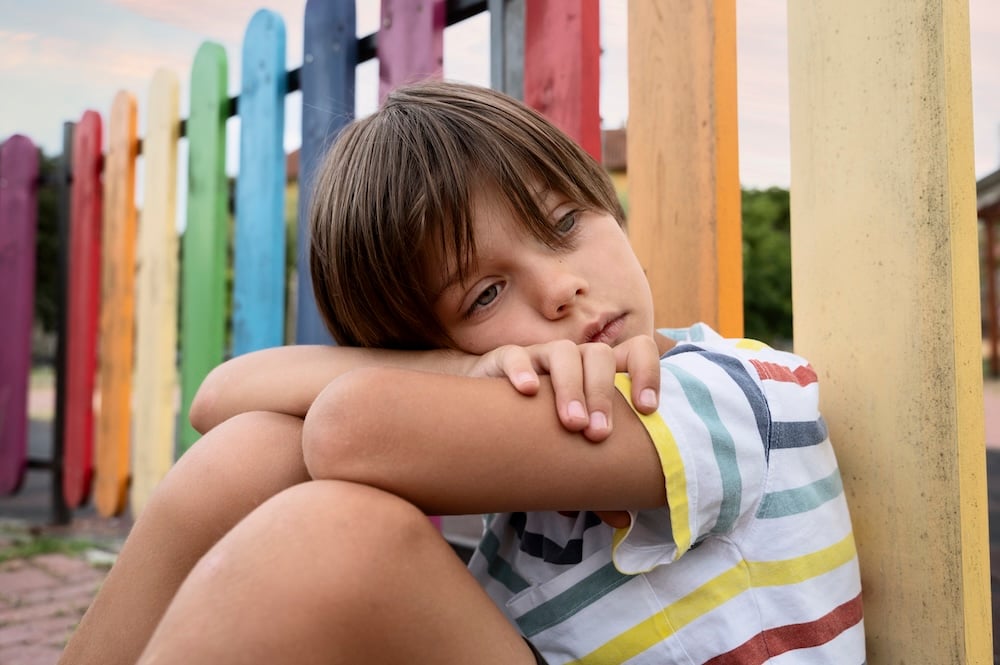Forgiveness is one of the most powerful tools we can teach children, not as a rule they must follow, but as a skill they can develop. Teaching kids forgiveness gives them the emotional tools to move forward after conflict, disappointment, or hurt. When we approach forgiveness not just as a moral directive but as a healing practice, we open the door to empathy, accountability, and growth.
Forgiveness isn’t about forgetting or excusing poor behavior. It’s about helping kids understand how to navigate complicated emotions, restore relationships, and continue building a supportive community. In this post, we’ll explore practical ways to begin teaching forgiveness and offer supportive strategies for what comes next, because forgiveness is only part of the journey.
Why teaching kids forgiveness matters
When a child feels wronged by a classmate, sibling, or even an adult, the emotional fallout can be confusing. They might hold onto resentment or feel unsure about how to respond. That’s where teaching forgiveness activities come into play.
Through object lessons on forgiveness, group discussions, and reflective practices, students begin to see forgiveness not as weakness but as strength. Forgiveness supports:
- Emotional regulation and healing
- Restoring peer connections after conflict
- Reduced classroom tension
- Growth in empathy and accountability
This is especially important in school settings where relationships are constantly forming, shifting, and sometimes breaking. A foundation in social emotional learning gives students the skills to manage these experiences thoughtfully.
Forgiveness is not a one-time event
Many children believe forgiveness means pretending something never happened. But when we take the time to explore how to teach kids forgiveness, we can model that forgiveness is a process—one that involves naming hurt, taking responsibility, and creating space to heal.
Forgiveness also doesn’t guarantee the relationship returns to what it was. And that’s okay. Children can learn to forgive and still set boundaries.
To help students walk through this process, educators can use the Peace Path, a simple yet effective tool that guides students through restorative conversations. It fosters accountability and makes space for forgiveness in an age-appropriate way.
Activities to teach forgiveness in the classroom
Looking for ways to incorporate activities to teach forgiveness into your daily classroom flow? Here are some ideas that gently introduce the concept and help students practice:
1. Forgiveness journal
Have students write about a time they felt hurt. What happened? How did they respond? How would they like to move forward? This activity builds emotional literacy and perspective-taking.
2. “Let it go” balloon activity
Inspired by Soul Shoppe’s Empty Balloon Exercise, students can write a hurt or grudge on a small piece of paper, place it inside a balloon, inflate it, and then pop it as a symbolic release.
3. Forgiveness craft
Create “forgiveness cards” with students—cards they can write when they’re ready to make amends or express forgiveness to a peer. These can be used voluntarily and kept private.
4. Games that teach forgiveness
Conflict resolution games—like role-playing apology and forgiveness scenarios—can help kids practice without the emotional weight of a real disagreement. Explore our full collection of activities through the Peacemaker Training, which gives educators a full toolkit for resolving conflict through empathy and repair.
Examples and scenarios: making forgiveness real

Here are a few forgiveness scenarios students may encounter:
- A friend says something unkind during recess.
- A peer refuses to share supplies during group work.
- Someone excludes them from a game or lunch group.
These may seem minor, but to students, they can feel deeply personal. Teaching forgiveness through real-life situations helps students process and respond in ways that maintain their emotional integrity.
By linking these moments to growth mindset and emotional regulation skills from our Elementary SEL Curriculum, students learn that relationships can mend—and even grow stronger—after rupture.
What happens after forgiveness?
After a child chooses to forgive—or is forgiven—there’s often still emotional residue. They may feel uncertainty, anxiety, or hope. Adults can help by naming this and supporting post-forgiveness healing.
Some things to remind students:
- Forgiveness is not approval of harmful behavior.
- It’s okay to take time before feeling ready.
- Setting boundaries after forgiveness is a healthy next step.
Adults can guide students through these stages using empathy tools, reflective writing, and gentle check-ins. And, of course, by modeling forgiveness in their own interactions.
Supporting forgiveness through Soul Shoppe
Forgiveness becomes more accessible when it’s part of the larger culture of the classroom. At Soul Shoppe, we believe in building schools where compassion and accountability go hand in hand. Our programs support this through:
- Peace Path: A structured framework for conflict resolution.
- Peacemaker Training: SEL-focused training that equips schools with tools to guide peer mediation and peaceful problem-solving.
- Social Emotional Learning: The foundation of our programs, designed to help kids understand emotions, build healthy relationships, and thrive.
By making forgiveness part of daily SEL practice, we prepare students to navigate life’s challenges with grace and connection.
Forgiveness is a skill for life
Teaching kids forgiveness isn’t just about fixing classroom conflicts. It’s about equipping young people with the tools to process hurt, express empathy, and rebuild trust throughout their lives. From a simple forgiveness craft to transformative conflict resolution practices, students thrive when they’re given the chance to understand forgiveness from a place of strength and choice.
With the right support, guidance, and tools like Soul Shoppe’s Peace Path and Peacemaker Training, students become not just more peaceful but more powerful, resilient, and connected.
You May Also Like:
Boundaries Activities for Kids
Teaching Assertiveness vs. Aggressiveness
Teaching Diversity in the Classroom


